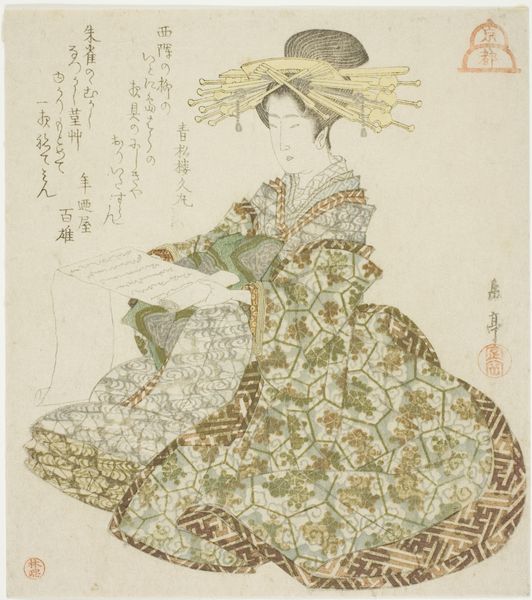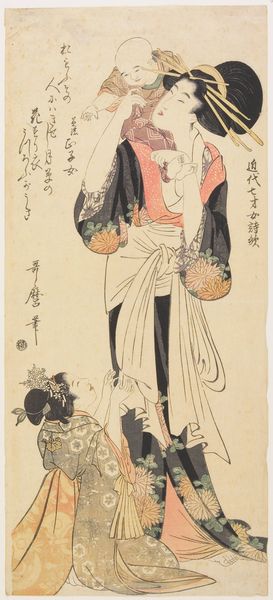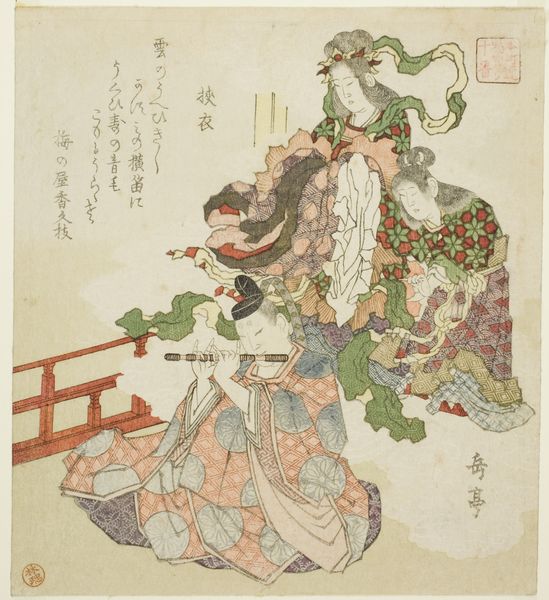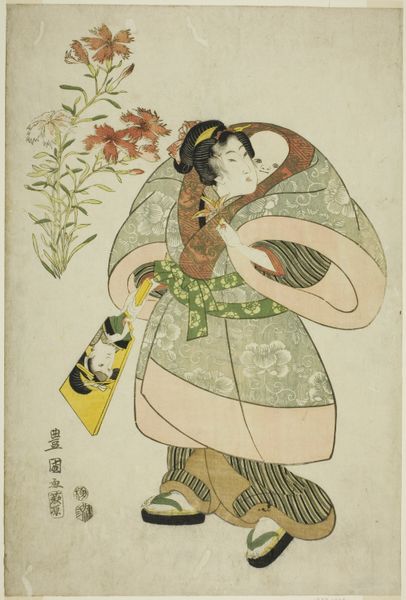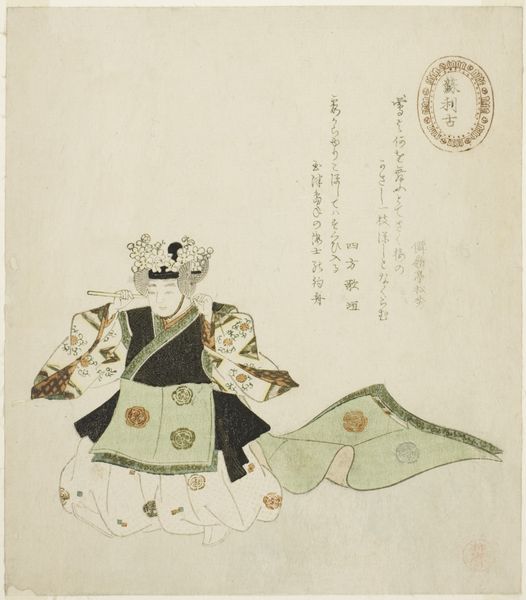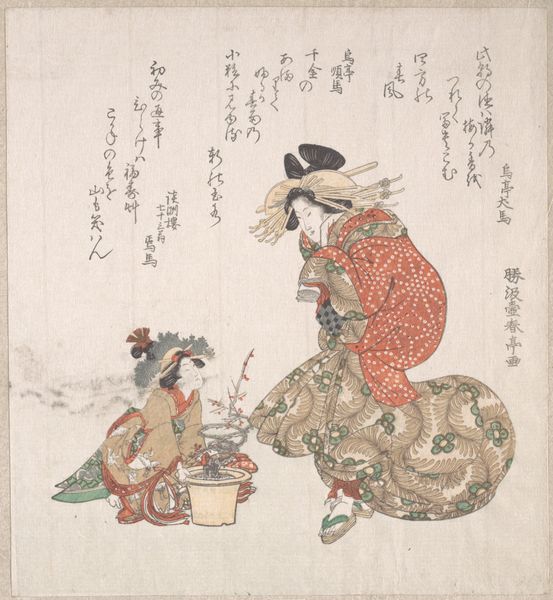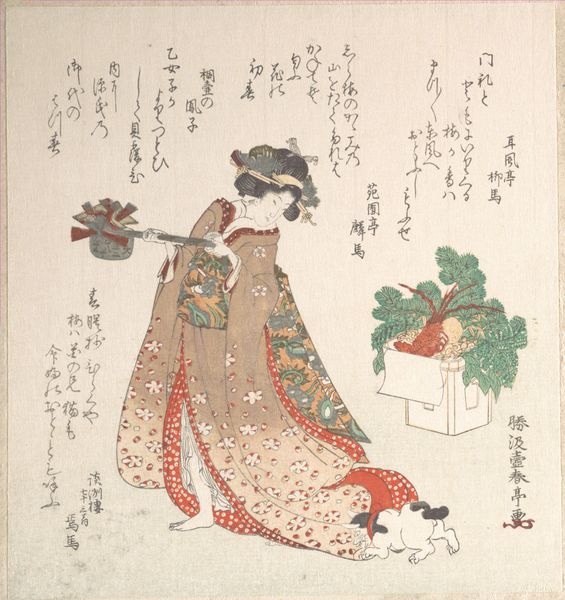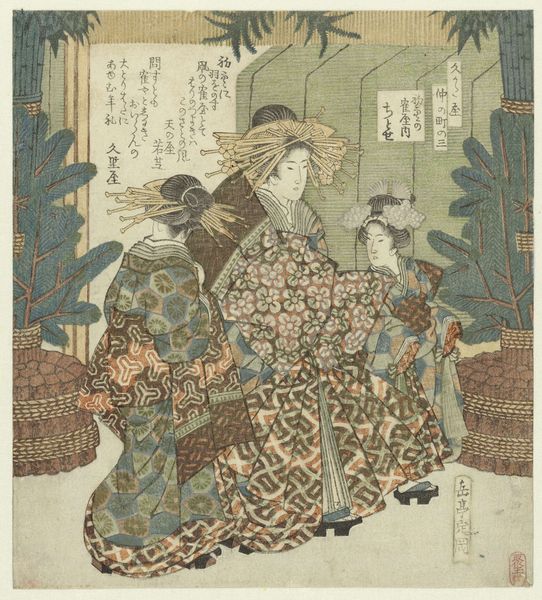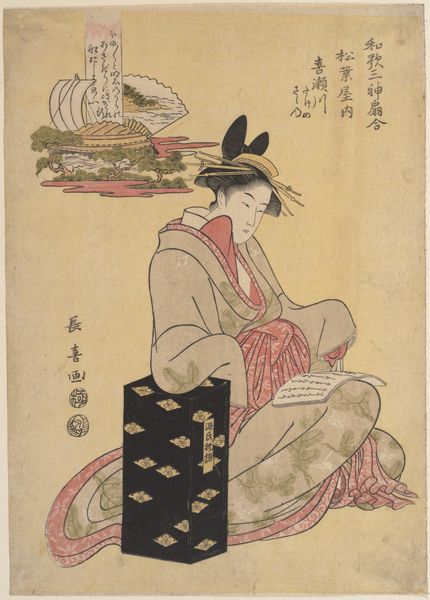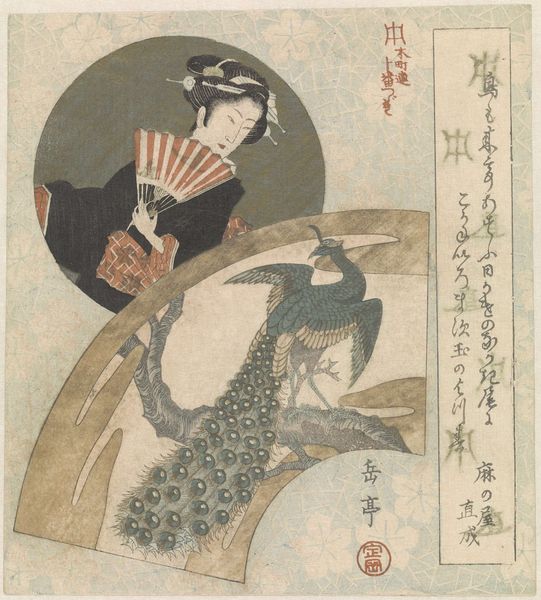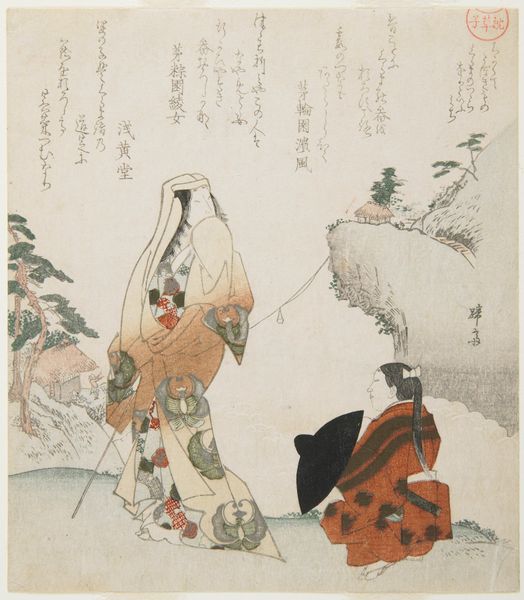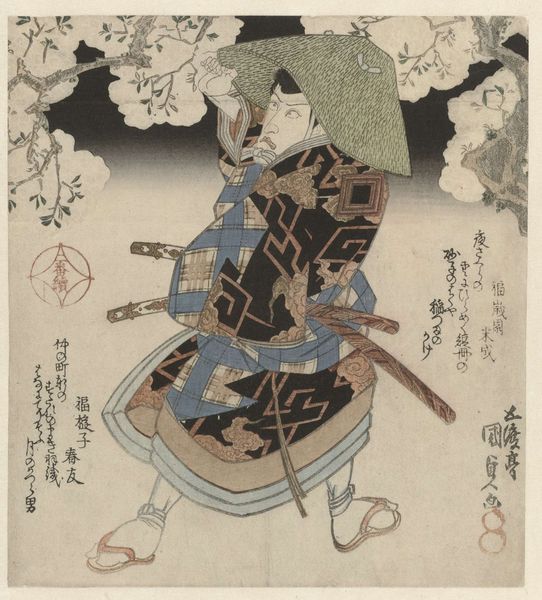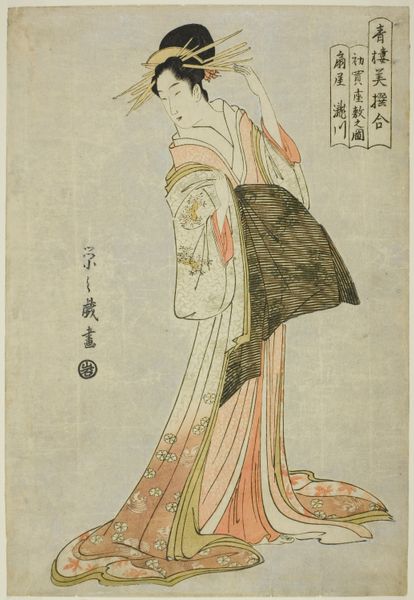
Osaka: Courtesan of the Shinmachi, from an untitled series of the three capitals c. 1820s - 1830s
0:00
0:00
print, paper, ink, woodblock-print
#
portrait
#
water colours
# print
#
asian-art
#
ukiyo-e
#
japan
#
figuration
#
paper
#
ink
#
woodblock-print
Dimensions: 21.7 × 19.4 cm (8 9/16 × 7 5/8 in.)
Copyright: Public Domain
Curator: Here we have Yashima Gakutei's "Osaka: Courtesan of the Shinmachi, from an untitled series of the three capitals," a woodblock print with ink and color on paper, created sometime in the 1820s or 30s. It's a relatively small work, yet quite captivating. Editor: Immediately, the patterns catch my eye. The intricate designs on her kimono and obi create such a striking contrast with the plain black robe and stark white ground. There's a stillness about her, yet the busyness of her attire suggests a dynamic energy beneath the surface. Curator: Indeed, the Ukiyo-e tradition often elevated courtesans to the level of celebrities, their fashion meticulously documented and emulated. This print not only provides a glimpse into the material culture of the time, but it also signifies the important economic roles of courtesans within these urban pleasure districts. Editor: Right, and considering the social stratification of the Edo period, these prints weren’t just innocent portraits. They functioned as a form of advertising, mythologizing the courtesan and shaping public perceptions of gender roles, beauty ideals, and the nature of desire. There's a negotiation of power at play. She seems to hold it lightly but confidently. Curator: Exactly. Gakutei captures her poise with precision. Note the detail in the rendering of her hair ornaments, juxtaposed with her comparatively blank facial expression. It encourages the viewer to see her more as a figure, rather than an individual. Editor: It’s almost as if she's an actor on a stage, consciously performing her role. Even the stark presentation of her makeup, that plain white, underscores the artifice involved. I keep asking myself, who is this figure *beyond* these culturally coded visual signs? Curator: It's precisely this tension, the intersection of representation and reality, that makes Ukiyo-e prints like this so fascinating for historical and cultural study. What do you make of the seemingly blank white note card she holds? Editor: That blank note really reinforces the artificiality, the distance the picture forces on you, that sense that there's so much hidden below this beautifully designed surface. But, you know, who can blame her for keeping some secrets to herself in this deeply political, commercialized, yet objectifying context? Curator: I'd say reflecting on those layered readings definitely encourages a far richer engagement with Gakutei's stunning work, especially in our contemporary climate. Editor: Absolutely, recognizing how historical artworks continue to speak to complex issues, about how social power impacts gender, visibility, and personhood—is key. It has certainly shifted my perspective today.
Comments
No comments
Be the first to comment and join the conversation on the ultimate creative platform.
